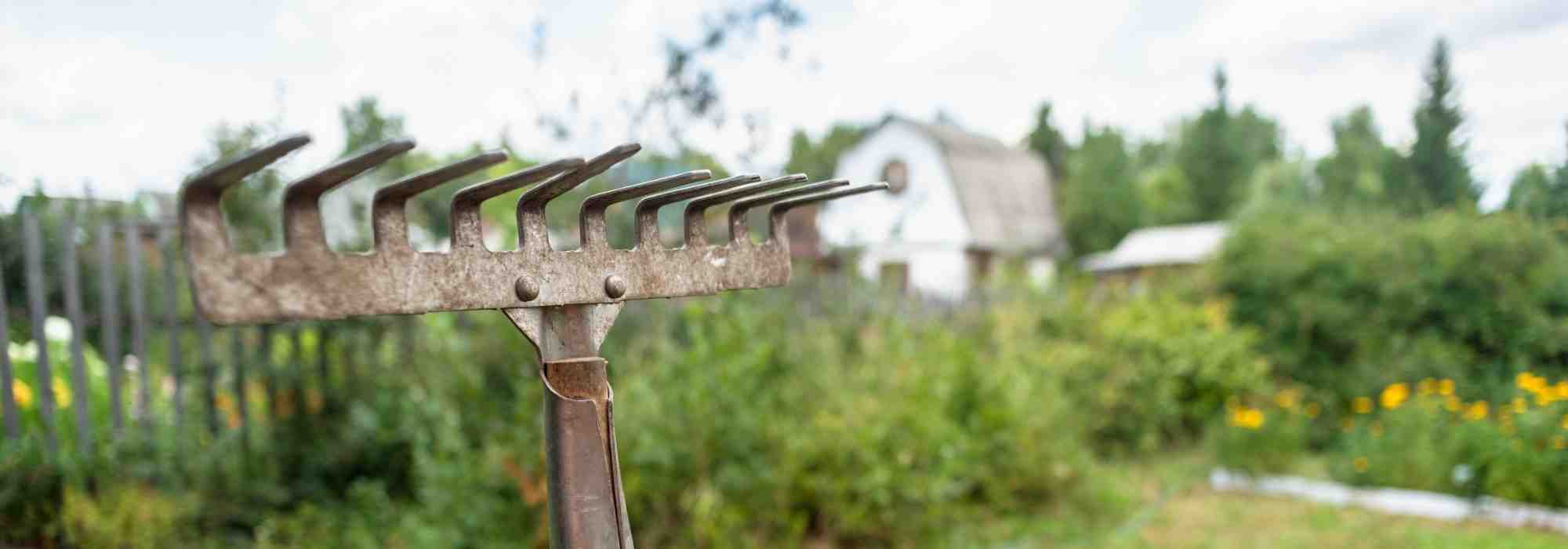
What is a rake used for?
The right rake for the job
Contents
Rakes are essential gardening tools. But beware! There are different types of rakes depending on use: leaf rake, rake for levelling soil, mini rake for working on small areas… Rakes can therefore be used to gather leaves or dry herbs, but others are more useful for levelling soil before sowing or for moving soil. Discover our tips to help you choose.
What is a rake?
A rake is a manual garden tool. It is used to gather leaves or twigs, or to level freshly dug soil. This tool is a compound of a handle in wood or metal to which a head in metal, plastic or even wood is attached (as originally). The head of a rake is either a crossbar fitted with straight or curved tines (the length and number of tines vary from one rake to another), or a series of flexible blades arranged in a fan. These two types of garden tools have fundamentally different uses (see below).
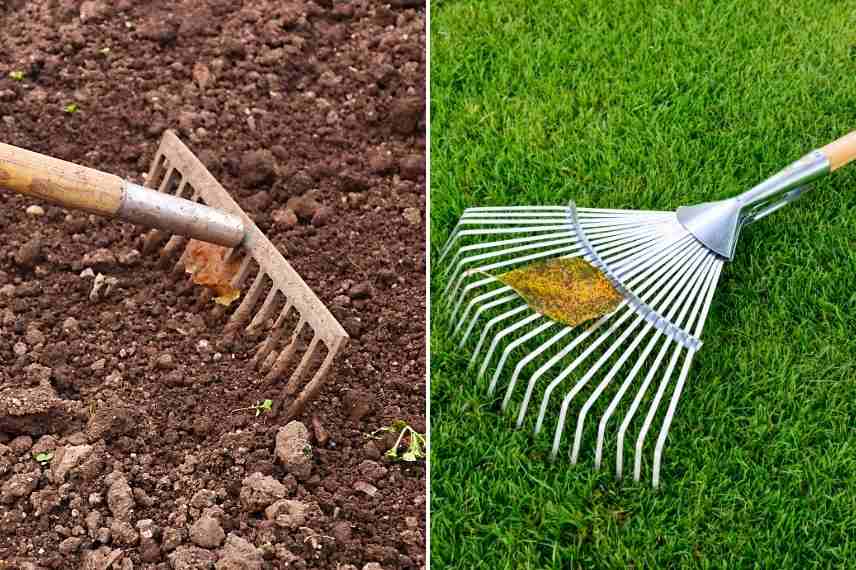
Read also
Garden tools: essentialsDifferent types of rakes
To choose a good rake, consider its intended use in the garden. There are different types of garden rakes. Broadly, a rake is used either to clear a surface or to level soil before sowing, for example.
- Leaf rake or broom-rake: it is a rake whose head is made of long, thin flexible tines. This type of rake is also called a “fan rake” or “lawn rake”. Use this type of rake to collect leaves or mowing residues efficiently and to rake dry herb (culm) from lawn. The head can be made of steel, heavier but often more durable, or of plastic, lighter and more flexible.
- Traditional rake for levelling soil: this tool usually has a steel head made up of several straight, relatively short tines. Width of the head and number of tines can vary: some rakes are only a few centimetres wide to get into tight spots. This type of rake allows flattening and removing large elements (clods, stones…) from soil before possible sowing or planting.
There are also gravel rakes with curved tines for spreading and levelling a layer of gravel. Finally, scarifying rakes have curved, sharp tines to remove moss and culms from lawn more effectively, for scarifying.
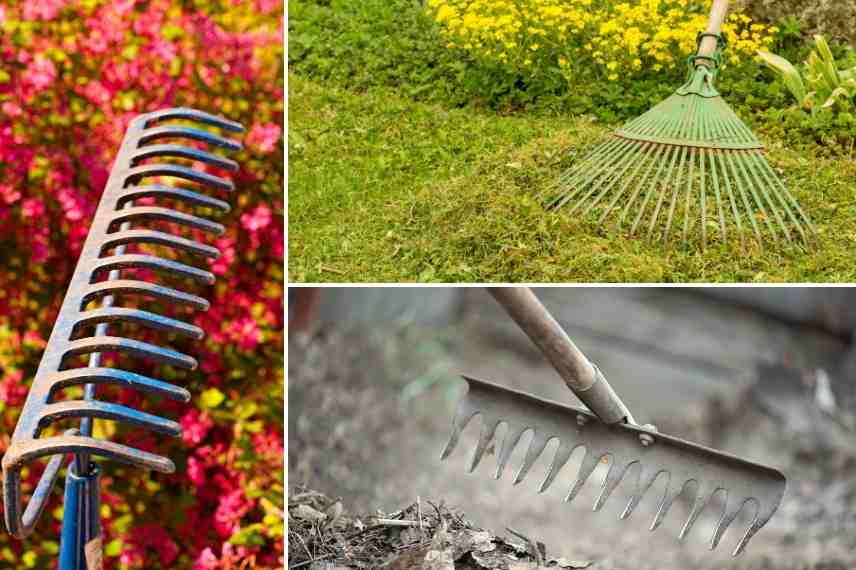
Some rakes have a short handle: flower rakes. They are very useful for working on small or hard-to-reach areas such as rockeries, flower beds or working in tubs and window boxes.
Also, choose a good rake according to handle length and tool weight. These two parameters should adapt to gardener’s morphology (not the other way round!). Even if rake will only be used occasionally, favour quality: do not go below mid-range!
Discover other Hand rakes, hand claws, and hand forks
View all →Available in 1 sizes
Available in 1 sizes
Available in 1 sizes
Available in 1 sizes
Available in 1 sizes
Available in 2 sizes
Available in 1 sizes
Which rake(s) to choose?
- For vegetable garden and creating borders and flowerbeds: classic garden rake, also called traditional rake with straight or slightly curved tines.
- For maintaining rockeries, borders and beds: rockery rake with narrow head.
- For cleaning the lawn: fan-shaped leaf rake or 32-tine lawn rake for collecting leaves, and scarifying rake to scarify short grass meadow, remove moss and clear culms (dry herbs).
- For tubs, window boxes and balcony planters: flower rake with very short handle.
- For gravel: gravel rake with curved tines.
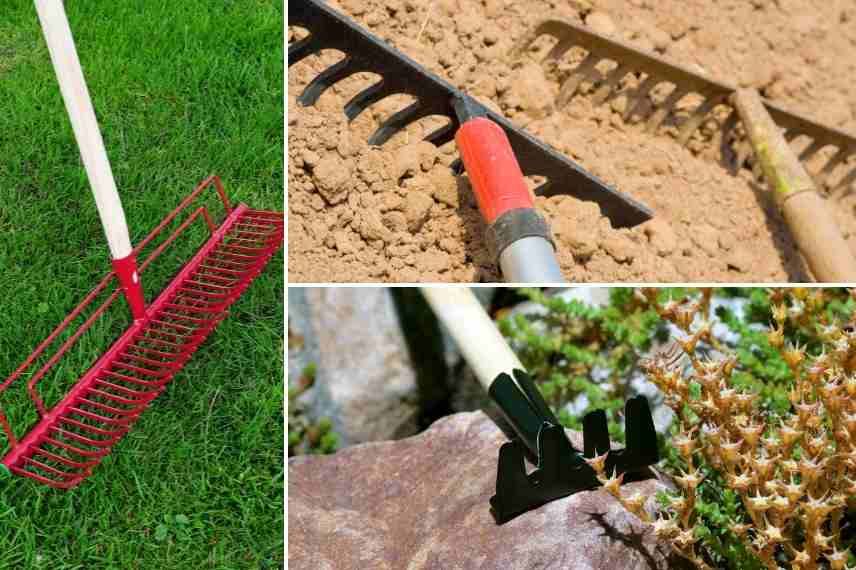
Lawn rake, classic vegetable-garden rake, flower rake
- Subscribe!
- Contents
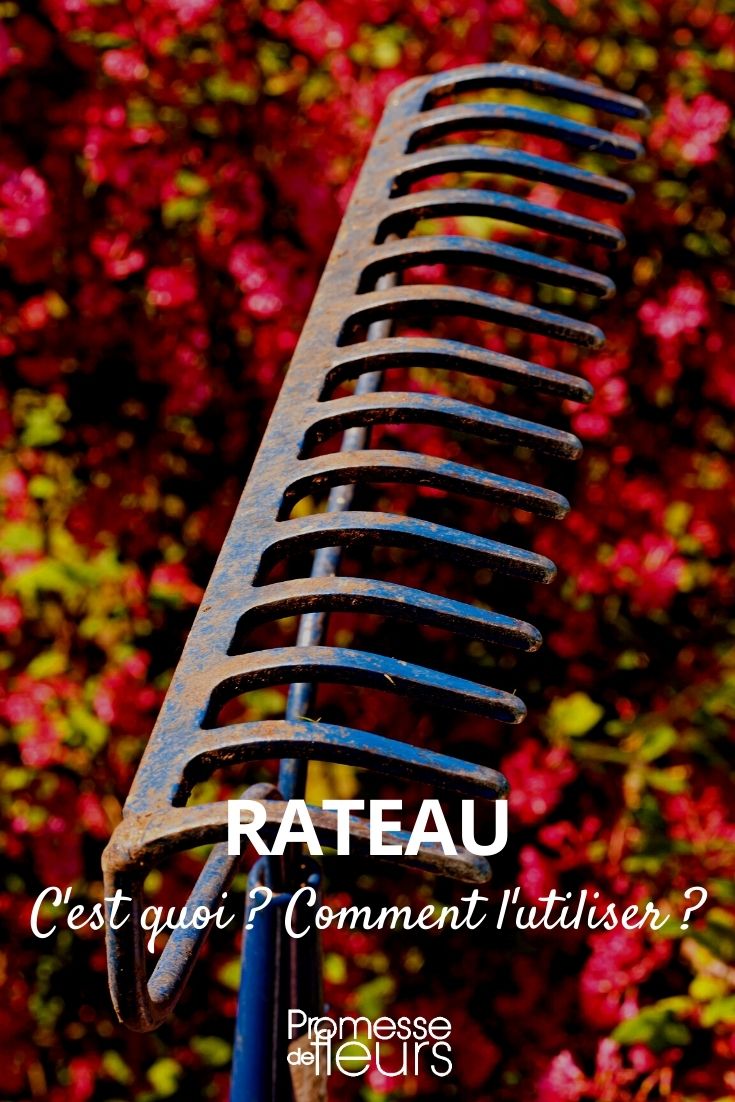































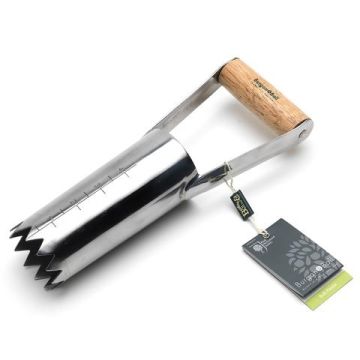
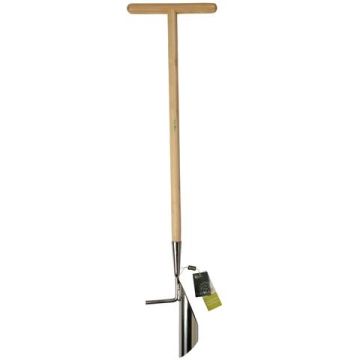

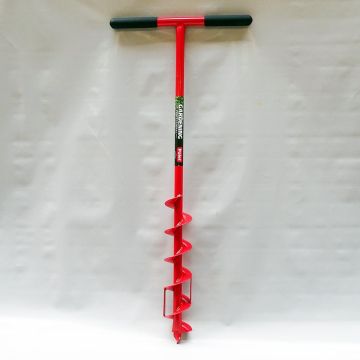
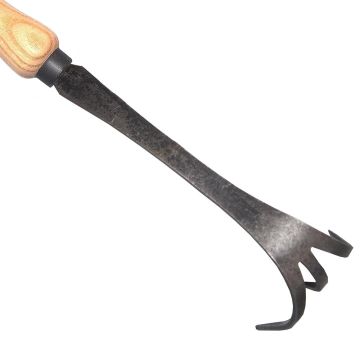
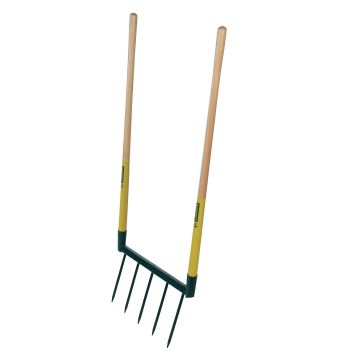
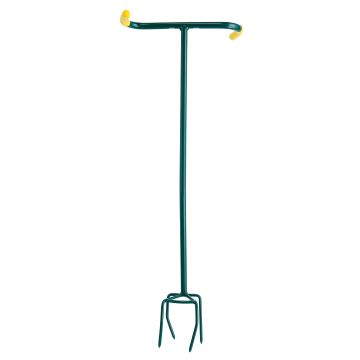
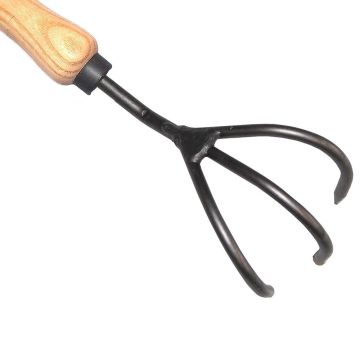
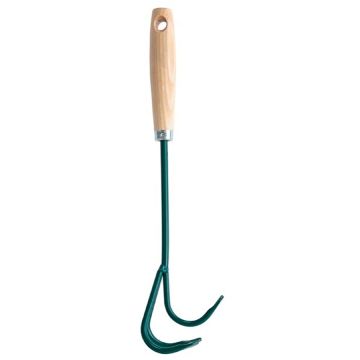
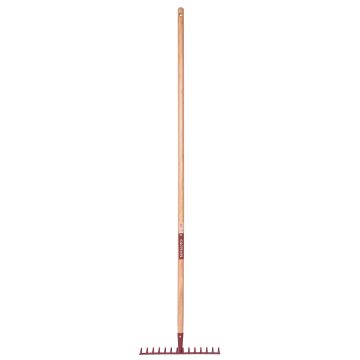
Comments